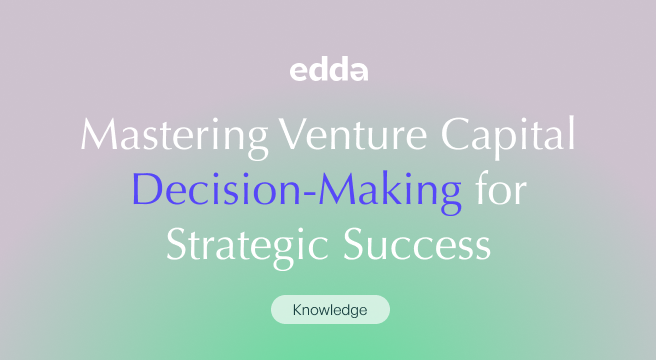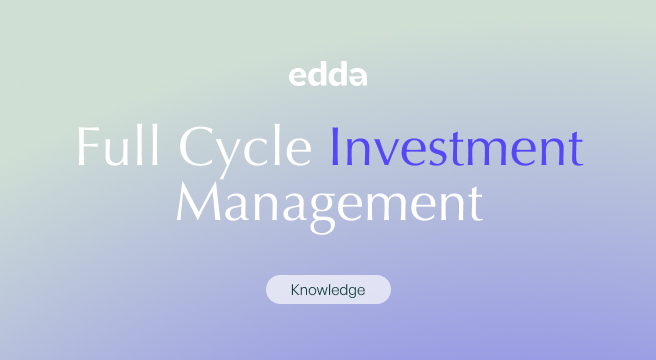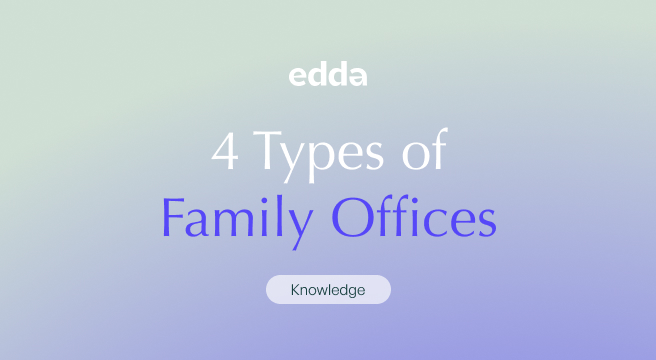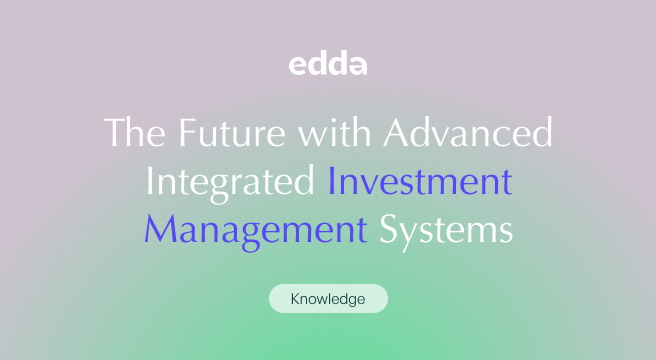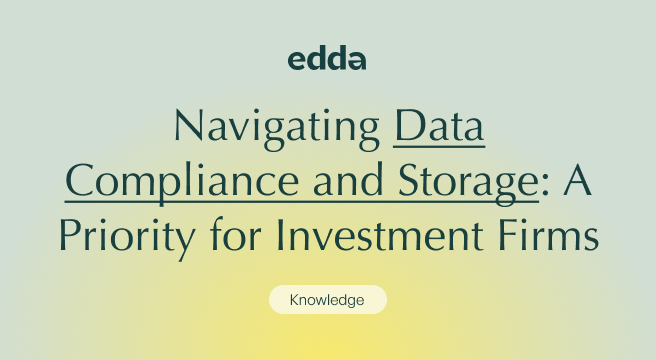When it comes to managing venture capital funds, stakes are high and competition is fierce. To stand out and succeed, funds must excel in pinpointing the right sectors to invest in and choosing the companies funded by venture capital within those sectors that have the potential to disrupt markets – or create new ones entirely.
This involves not just identifying companies with innovative technologies or business models, but also visionary founders who are capable of effectively bringing their vision to life.
A methodical investment selection process, starting with clear evaluation criteria and thorough screening, paves the way for informed, strategic commitments. This article serves as a primer on the essential pre-investment activities that set the stage for a venture capital fund’s success.
In addition, discover how venture capital management software can help pave the way for success.
Market Research & Sector Specialization
Success in venture capital hinges on a deep market understanding and a strategic focus on particular sectors, allowing for confident, innovation-driven investments. Market research is an ongoing endeavor, essential for keeping ahead of the curve on trends, consumer behaviors, technological developments, and regulatory shifts. This continuous insight enables venture capital firms to spot emerging opportunities and risks promptly.
By specializing, venture capital funds gain a nuanced understanding of specific fields, enhancing their ability to evaluate investments and offer nuanced advice to their portfolio companies, boosting their prospects for success.
Yet, it’s crucial to avoid becoming too narrow-focused. The most effective venture capital funds maintain flexibility, ready to explore adjacent fields and groundbreaking innovations that challenge traditional boundaries.
Expanding a diverse network, including entrepreneurs, scholars, and fellow investors, is also vital, offering a broader perspective and early insights into market changes or novel technologies. Such networks serve as an expansive radar, enhancing a venture capital fund’s agility in seizing new ventures, enriching its investment strategy, and making it a supportive ally to its portfolio companies.
The Investment Selection Process
This stage is where theoretical strategies and insights are translated into tangible actions and commitments. The first step in a rigorous investment selection process is to establish a structured framework that outlines clear criteria for evaluation.
These criteria might include:
- Scalability – How scalable is the business model, and can it adapt to meet increasing demand without compromising efficiency or quality?
- Uniqueness – What sets the technology or solution apart in terms of innovation, and how does it surpass existing alternatives?
- Growth Potential – What is the current size and projected growth of the target market, and how does the venture plan to capture and expand its market share?
- Strength of Vision – How do the strength and vision of the founding team align with the venture’s long-term objectives, and what evidence supports their capability to navigate challenges and lead the company to success?
A Rigorous Screening Process
Sticking to a structured framework facilitates objective decision-making, as every potential investment is assessed through a consistent lens. Once the framework is in place, the next step is a rigorous screening process to filter out companies that do not meet the fund’s criteria.
The aim is to narrow down the pool of candidates. Venture capital firms prefer to invest in those that align with the fund’s investment thesis and demonstrate strong potential for growth and success.
Here are some red flags to look out for:
- A lack of detail or realism in the business plan could indicate an insufficient understanding of the business environment or an unviable business model.
- If founders display unclear communication about their vision, lack of commitment, or inability to address potential challenges, these could be signs of weak leadership or a lack of strategic direction.
- Discovering a saturated market with limited growth potential or identifying significant regulatory hurdles that have not been addressed could suggest the venture might struggle to achieve substantial growth.
- If the venture lacks a clear competitive advantage or fails to differentiate itself from existing solutions, it might struggle to capture market share or face intense competition that could hinder its success.
Deeper Due Diligence
For the opportunities that pass the initial screening, a deeper venture capital due diligence process should be undertaken to mitigate risks identified by potential red flags but also uncover opportunities for value creation that may not be evident through surface-level analysis.
Investigating the technology or product more closely, including the development stage, innovation level, user feedback, and market fit, offers insights into its potential to meet unfulfilled market needs or outperform existing solutions.
The strength, breadth, and defensibility of the company’s intellectual property portfolio will provide a clearer picture of its ability to protect its innovations and maintain competitive advantages.
Assessing Financial Health
A detailed review of financial statements, cash flow, revenue growth, and profitability metrics uncovers the company’s financial health and sustainability. It helps identify any underlying issues not apparent during the initial screening, such as inconsistent revenue streams or high burn rates, that could jeopardize long-term viability.
The goal is to assess the realism of the company’s financial projections. It’s crucial to understand the assumptions underlying the company’s financial forecasts and to evaluate their viability in the context of market dynamics and the company’s operational capabilities.
Scrutinizing the Business Model
By scrutinizing the business model, investors can assess the strength of the value proposition, revenue generation mechanisms, cost structures, and scalability potential. This deeper look can reveal vulnerabilities or inefficiencies in the business model that could impede scaling or achieving profitability.
To yield deeper insights, here are some questions VCs need to be asking:
- What specific customer needs or market gaps does the value proposition address, and how effectively does it solve these issues compared to existing alternatives?
- What are the primary revenue streams for the business, and how sustainable and predictable are they in the long term?
- Are there opportunities for cost optimization without compromising product quality or customer satisfaction, particularly in areas such as operations, procurement, or logistics?
- What are the key challenges and bottlenecks in scaling the business, and what strategies are in place to overcome them?
- How has the business model adapted to changing market conditions or customer feedback in the past, and what mechanisms are in place for ongoing adaptation?
- What evidence, such as market research or pilot programs, supports the current market fit of the product or service?
Thorough Market Analysis
A more thorough market analysis provides insights into the company’s market share, customer acquisition strategies, and value delivery, allowing investors to gauge the company’s ability to capture and retain a significant market segment amidst competitive pressures. It can also uncover potential threats or market shifts that could impact the venture’s position, such as emerging technologies or changing consumer preferences.
Evaluating Operational Capabilities
Having a good product and business plan is a good start but it must be supported by sound infrastructure and assets. Evaluating the company’s operational capabilities and technological assets is crucial to understanding its ability to execute its business plan effectively.
For technology-driven companies, a thorough evaluation of the technology stack, intellectual property portfolio, and the scalability of the technology solution is essential. For example, how does the technology infrastructure support scaling, and are there investments required to enhance scalability, such as in automation or process improvement?
Legal Compliance
Ensuring that the company complies with all relevant laws and regulations is another critical component of due diligence. This involves reviewing contracts, intellectual property rights, employment agreements, and any pending or potential legal issues. For companies in highly regulated industries, a thorough understanding of the regulatory landscape and the company’s compliance status is essential to mitigate legal and regulatory risks.
Assessing the Team
Lastly, perhaps the most critical element of the due diligence process is the evaluation of the company’s management team and key personnel. The success of a startup often hinges on the capabilities, vision, and leadership qualities of its founding team.
Collaborative Decision-Making
Assessing the team’s experience, track record, cohesion, and commitment to the company’s vision is vital. This often involves conducting interviews with the founders and key team members to understand their strategic vision, operational capabilities, and the cultural dynamics within the company.
The transition from initial screening to a deeper due diligence process allows for a more granular and comprehensive examination of potential investments, yielding insights that are critical for informed decision-making. This in-depth analysis is crucial for uncovering potential risks, validating the company’s growth prospects, and ensuring that the investment decision is based on a solid foundation of knowledge and insight.
The final investment decision is typically made through a collaborative process that involves multiple stakeholders within the fund. This collective deliberation helps ensure that the decision is well-rounded, taking into account diverse perspectives and expertise.
It also serves as a check against individual biases, ensuring that the investment aligns with the fund’s strategic objectives and has been subjected to thorough scrutiny.
This exploration of the pre-investment stage in venture capital fund management marks just the beginning of a comprehensive journey. Decided to invest? For insights into the next steps, read our blog on Active Portfolio Management.
Conclusion
In the pre-investment stage of venture capital, precision in due diligence sets the stage for success. Edda, a popular alternative to Affinity tools, provides a comprehensive software venture capital platform that empowers VC firms with advanced tools for efficient deal evaluation and strategic investment decisions.
With its robust dealflow CRM and relationship intelligence capabilities, Edda is the linchpin for firms aiming to uncover and nurture high-potential companies and facilitate VC connections. Elevate your investment strategy with Edda and secure your position at the forefront of venture capital innovation. Discover how Edda can enhance your due diligence process by visiting our website today.



